Shop > Apple trees > Self-fertile
Self-fertile apple trees
Self-fertile apple trees do not require a pollination partner to produce a crop. For more information about pollination, see our pollination advice page.
Bare root
A small, sweet apple which is a favourite with children due to its size. The colour is a deep red, almost purple.
Type: Dessert
Season: October
Pollination: Self-fertile. Pollination group C
A large cooking apple that stores well and mellows into a sharp but flavoursome dessert apple in winter.
Type: Dual-purpose
Season: October-March
Pollination: Partially self-fertile. Pollination group D
A popular heavy-cropping dual-purpose variety from Scotland. Red flush stripes over pale green with a creamy white flesh. Excellent refreshing flavour and a reliable cropper.
Type: Dessert/Culinary
Season: September-October
Pollination: Partially self-fertile. Pollination group C
Easy to grow, heavy and regular crops. Honeyed and very sweet when left on the tree to ripen. Fruit stores well, and is versatile - can be used for cooking and eating.
Type: Dessert
Season: November - February
Pollination: Partially self-fertile. Group 4
Medium size, crisp apple. Good for juicing and good cropping. Easy to grow cox-style apple. Primarily an eater, but also cooks well, holding its shape.
Type: Dessert
Season: October-March
Pollination: Partially self-fertile. Pollination group D
Exceptionally flavoursome orange-flushed dessert apple. Very juicy, with soft flesh almost like a pear. Fruit develops a hint of aniseed flavour when very ripe.
Type: Dessert
Season: September-October
Pollination: Self-fertile. Pollination group D
Medium sized apple, good balance between sweetness and sharpness. Flavour and soft flesh are reminiscent of a firm pear. Easy to grow. Perfect for juicing and tarts. Excellent pollinator for ‘Cox’ and ‘Braeburn‘ varieties.
Type: Dessert
Season: October-January
Pollination: Partially self-fertile. Pollination group B
*indicates a tree that has been grown at another nursery and is for resale
One of the best early cookers, perfect for making baked apple and apple sauce. Produces beautiful pink blossom.
Type: Culinary
Season: September-November
Pollination: Partially self-fertile. Pollination group C
An old American variety producing sweet, juicy dessert apples with a hint of vanilla flavour.
Type: Dessert
Season: October-December
Pollination: Partially self-fertile. Pollination group C
An attractive fruit with dark red colour and stripes. Crisp and sweet.
Type: Dessert
Season: September-December
Pollination: Partially self-fertile.
An exceptionally large and attractive culinary apple that is quite sweet and keeps its shape when cooked. Vigorous grower and heavy cropper.
Type: Culinary
Season: Oct-Mar
Pollination: Partially self-fertile. Pollination group C
A reliable and popular mid-season green/yellow apple, easy to grow and productive. Sweet and sharp flavour. Particularly good for juicing.
Type: Dessert
Season: September-October
Pollination: Self-fertile. Pollination group B
A heavy-cropping, late season dessert apple with a sweet flavour and firm flesh. The fruit is greenish-yellow with red flushing and striping.
Type: Dessert
Season: October-January
Pollination: Partially self-fertile. Pollination group D
A popular and versatile dual-purpose variety, widely grown in the Victorian era. Apples have a good flavour when ripe and keep their shape when cooked.
Type: Dessert/Culinary
Season: October-January
Pollination: Self-fertile. Pollination group D
An excellent dual-purpose variety that is also good in cider. Pale yellow skin with a red flush. Strong flavour with a hint of pineapple. Stores well.
Type: Dessert/Culinary/Cider
Season: October-April
Pollination: Self-fertile. Pollination group C
Potted
Please note potted trees are not available for delivery outside of the Leeds & Bradford area.
An exceptionally large and attractive culinary apple that is quite sweet and keeps its shape when cooked. Vigorous grower and heavy cropper.
Type: Culinary
Season: Oct-Mar
Pollination: Partially self-fertile. Pollination group C
One of the best early cookers, perfect for making baked apple and apple sauce. Produces beautiful pink blossom.
Type: Culinary
Season: September-November
Pollination: Partially self-fertile. Pollination group C
A popular and versatile dual-purpose variety, widely grown in the Victorian era. Apples have a good flavour when ripe and keep their shape when cooked.
Type: Dessert/Culinary
Season: October-January
Pollination: Self-fertile. Pollination group D
A superb, heavy cropping dessert variety. The yellow russeted fruit are sweet, juicy and buttery.
Type: Dessert
Season: October-January
Pollination: Partially self-fertile. Pollination group C
A popular garden variety that ripens later than most producing dark red, firm fruit. Good for the Northern climate.
Season: Late July
Pollination: Self-fertile.
A very popular English dessert plum named after Queen Victoria. The fruit are pinkish-red, sweet and juicy, and are wonderful to eat fresh or cooked. A heavy cropper that will produce lots of fruit.
Type: Dessert/Culinary
Season: Late August
Pollination: Self-fertile. Pollination group C
Produces early crops of deliciously sweet dessert plums. The fruit are an attractive yellow flushed with reddish-purple.
Type: Dessert
Season: Early August
Pollination: Self-fertile. Pollination group C
A late season heavy cropping dessert plum. Fruit has an intense sweet, nectar-like, juicy flavour.
Type: Dessert
Season: Late September
Pollination: Self-fertile. Pollination group C
A heavy-cropping, late season dessert apple with a sweet flavour and firm flesh. The fruit is greenish-yellow with red flushing and striping.
Type: Dessert
Season: October-January
Pollination: Partially self-fertile. Pollination group D
A small, late-keeping apple with firm and juicy flesh. The fruit are a little sharp when freshly picked but mellow in storage to become sweet and aromatic.
Type: Dessert
Season: November-March
Pollination: Self-fertile. Pollination group D
A small, sweet apple which is a favourite with children due to its size. The colour is a deep red, almost purple.
Type: Dessert
Season: October
Pollination: Self-fertile. Pollination group C
A sweet, medium-sized apple with a honey-like flavour. The colour is a very appealing shade of red.
Type: Dessert
Season: September
Pollination: Self-fertile. Pollination group D
Early season dessert apple. Produces heavy crops of small flushed fruit that are sweet, juicy and lightly aromatic with some Cox flavour.
Type: Dessert
Season: August-September
Pollination: Partially self-fertile. Pollination group C
A traditional early season cooking apple with a long, rather squashed shape and pale green-yellow colour. Can be eaten fresh when ripe.
Type: Culinary
Season: August-September
Pollination: Partially self-fertile. Pollination group B
A popular heavy-cropping dual-purpose variety from Scotland. Red flush stripes over pale green with a creamy white flesh. Excellent refreshing flavour and a reliable cropper.
Type: Dessert/Culinary
Season: September-October
Pollination: Partially self-fertile. Pollination group C
Easy to grow, heavy and regular crops. Honeyed and very sweet when left on the tree to ripen. Fruit stores well, and is versatile - can be used for cooking and eating.
Type: Dessert
Season: November - February
Pollination: Group 4
A rare dual-purpose variety named after the founder of the Quaker movement. Produces large yellow pink-speckled fruit.
Type: Dessert/Culinary
Season: November-April
Pollination: Partially self-fertile. Pollination group B
Medium size, crisp apple. Good for juicing and good cropping. Easy to grow cox-style apple. Primarily an eater, but also cooks well, holding its shape.
Type: Dessert
Season: October-March
Pollination: Partially self-fertile. Pollination group D
Exceptionally flavoursome orange-flushed dessert apple. Very juicy, with soft flesh almost like a pear. Fruit develops a hint of aniseed flavour when very ripe.
Type: Dessert
Season: September-October
Pollination: Self-fertile. Pollination group D
Medium sized apple, good balance between sweetness and sharpness. Flavour and soft flesh are reminiscent of a firm pear. Easy to grow. Perfect for juicing and tarts. Excellent pollinator for ‘Cox’ and ‘Braeburn‘ varieties.
Type: Dessert
Season: October-January
Pollination: Partially self-fertile. Pollination group B
An attractive red-flushed French dessert pear. Richly flavoured, buttery and juicy..
Type: Dessert
Season: Oct-Nov
Pollination: Partially self-fertile. Pollination group C
A late-season, heavy-cropping, culinary apple with a sweet, light flavour and white flesh which keeps its shape when cooked. Stores well.
Type: Culinary
Season: October-April
Pollination: Partially self-fertile. Pollination group E
An old American variety producing sweet, juicy dessert apples with a hint of vanilla flavour.
Type: Dessert
Season: October-December
Pollination: Partially self-fertile. Pollination group C
An excellent dual-purpose variety that is also good in cider. Pale yellow skin with a red flush. Strong flavour with a hint of pineapple. Stores well.
Type: Dessert/Culinary/Cider
Season: October-April
Pollination: Self-fertile. Pollination group C
Delivery, Collection and FAQs
-
We deliver bare root trees (dispatched Nov-Apr) but not potted trees. Potted trees are collection only from Leeds (or we can deliver locally by arrangement).
-
See our Delivery & Collection Info page for up-to-date delivery rates.
-
Yes, you can collect your order from Kirkstall, Leeds. We send the full details when you place your order.
-
This varies, but broadly speaking trees classified as Small are 3-4ft and 1 year old. Trees classified as Large are 4-6ft. are 2-3 years old and have some established branches.



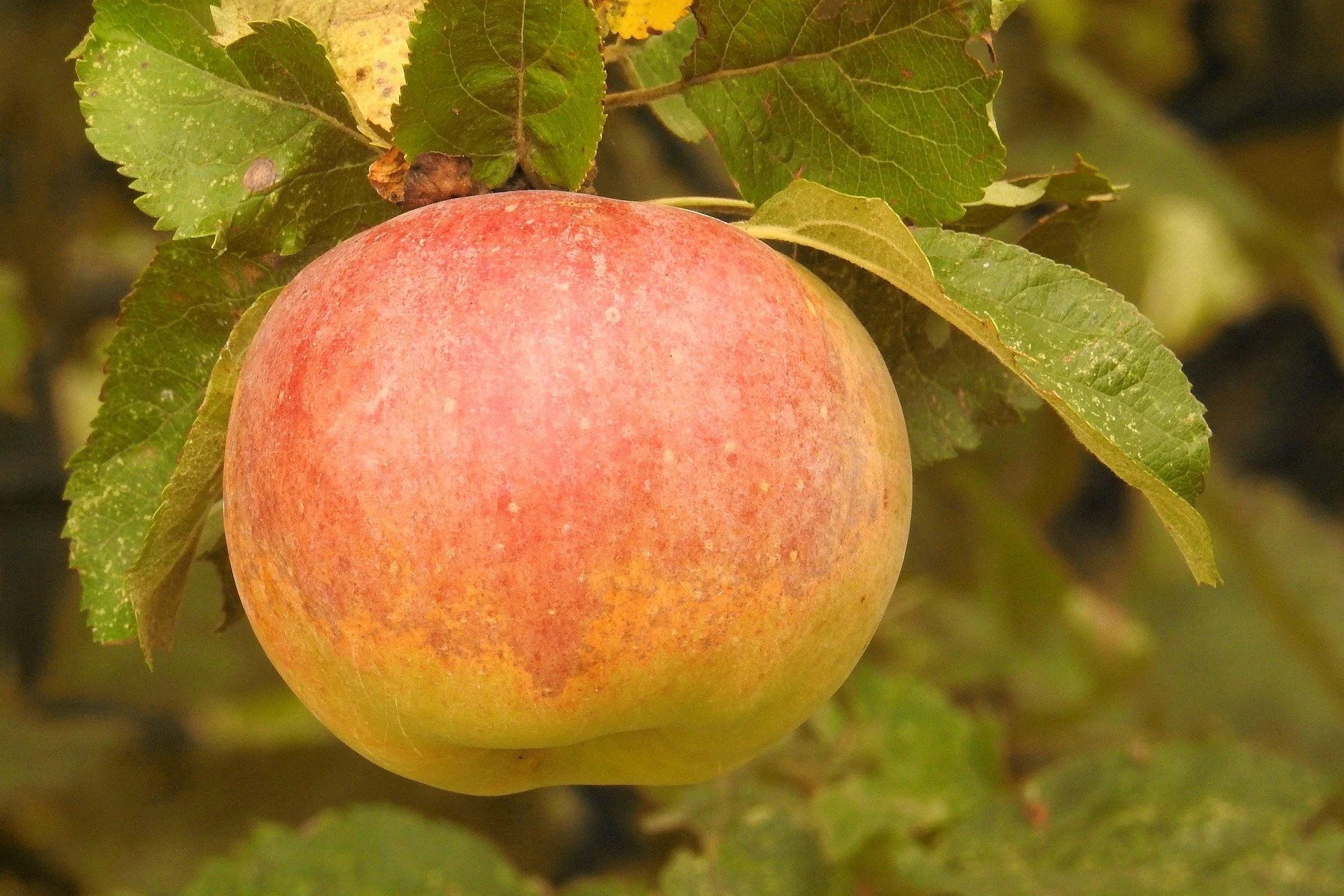

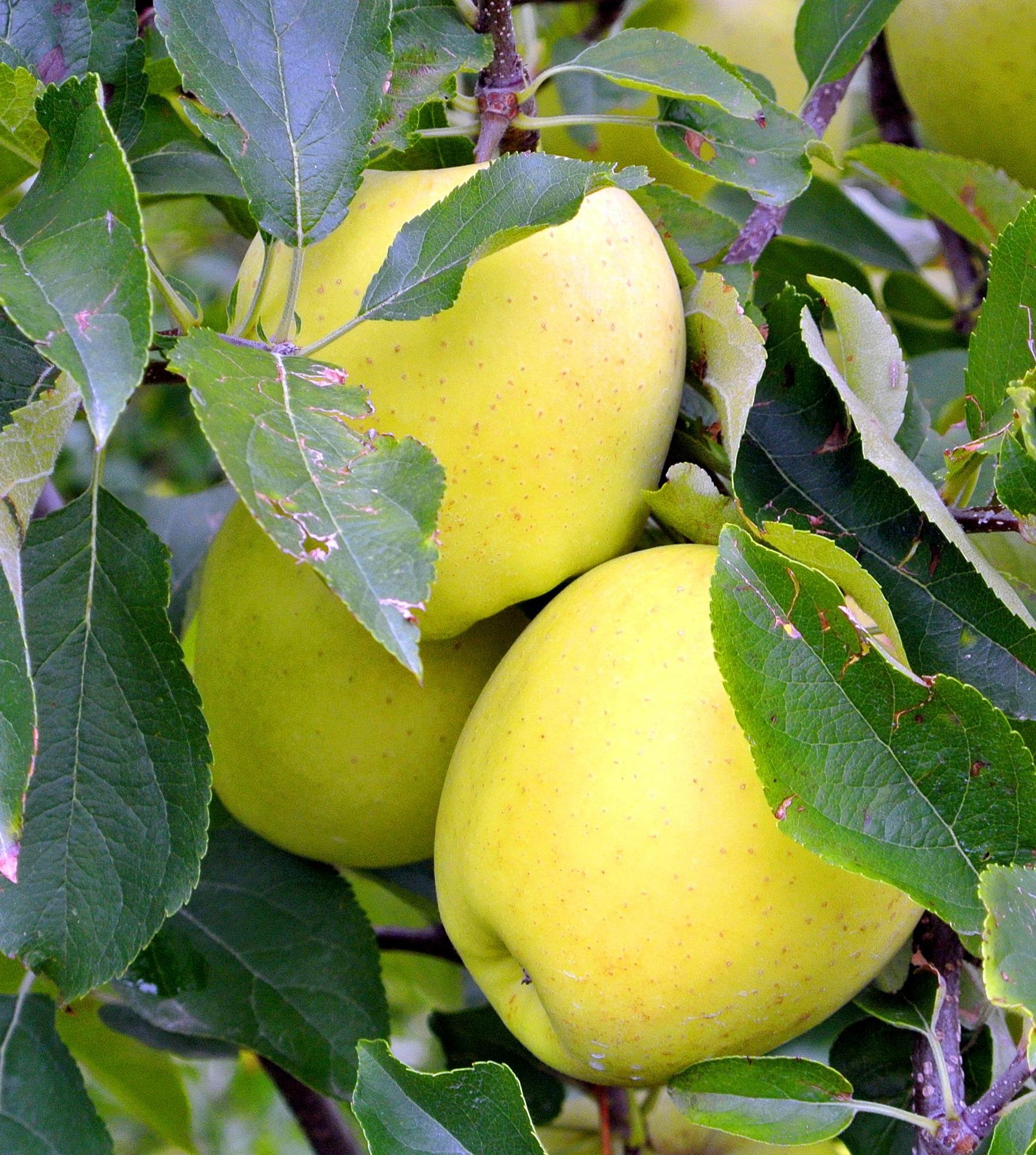





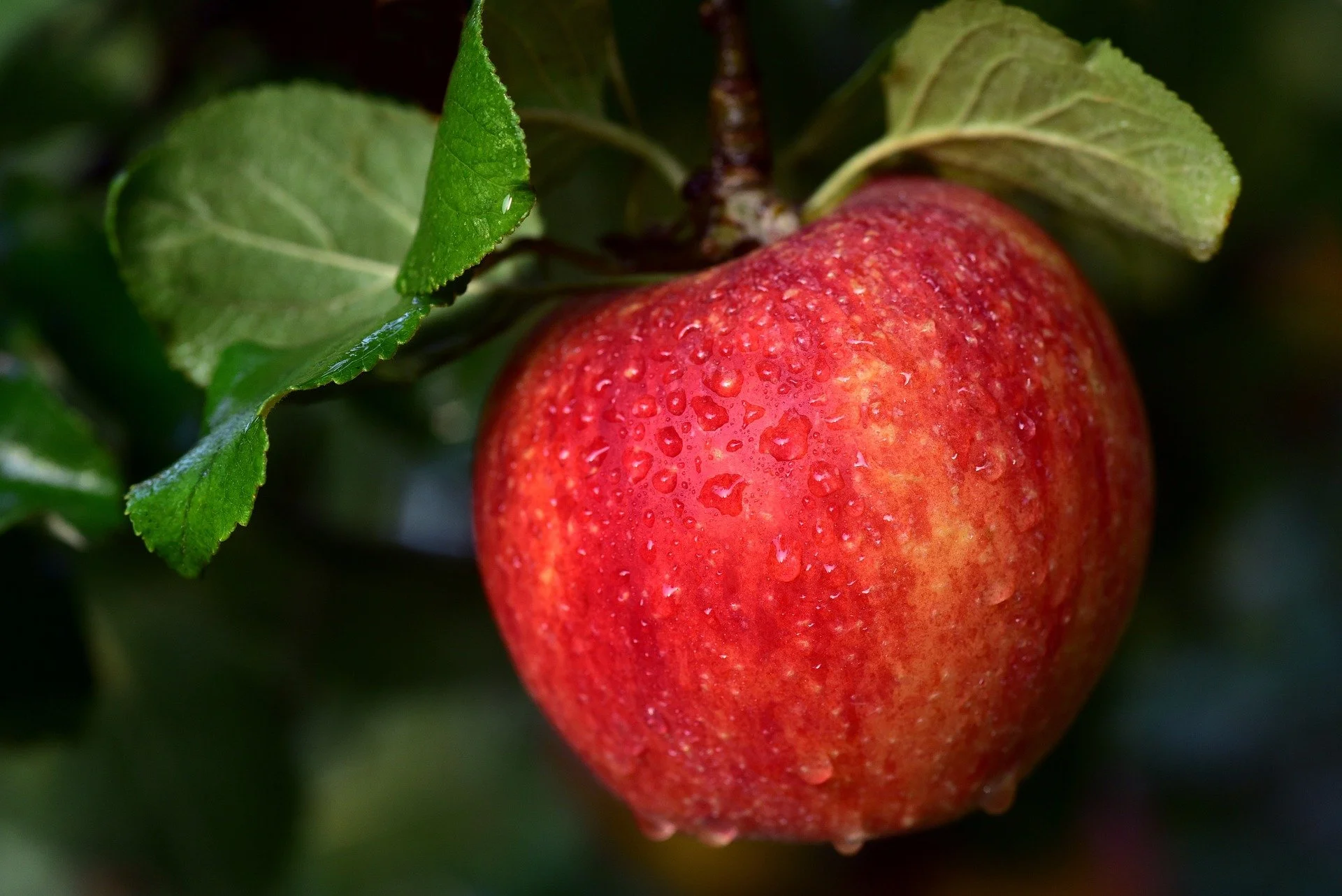
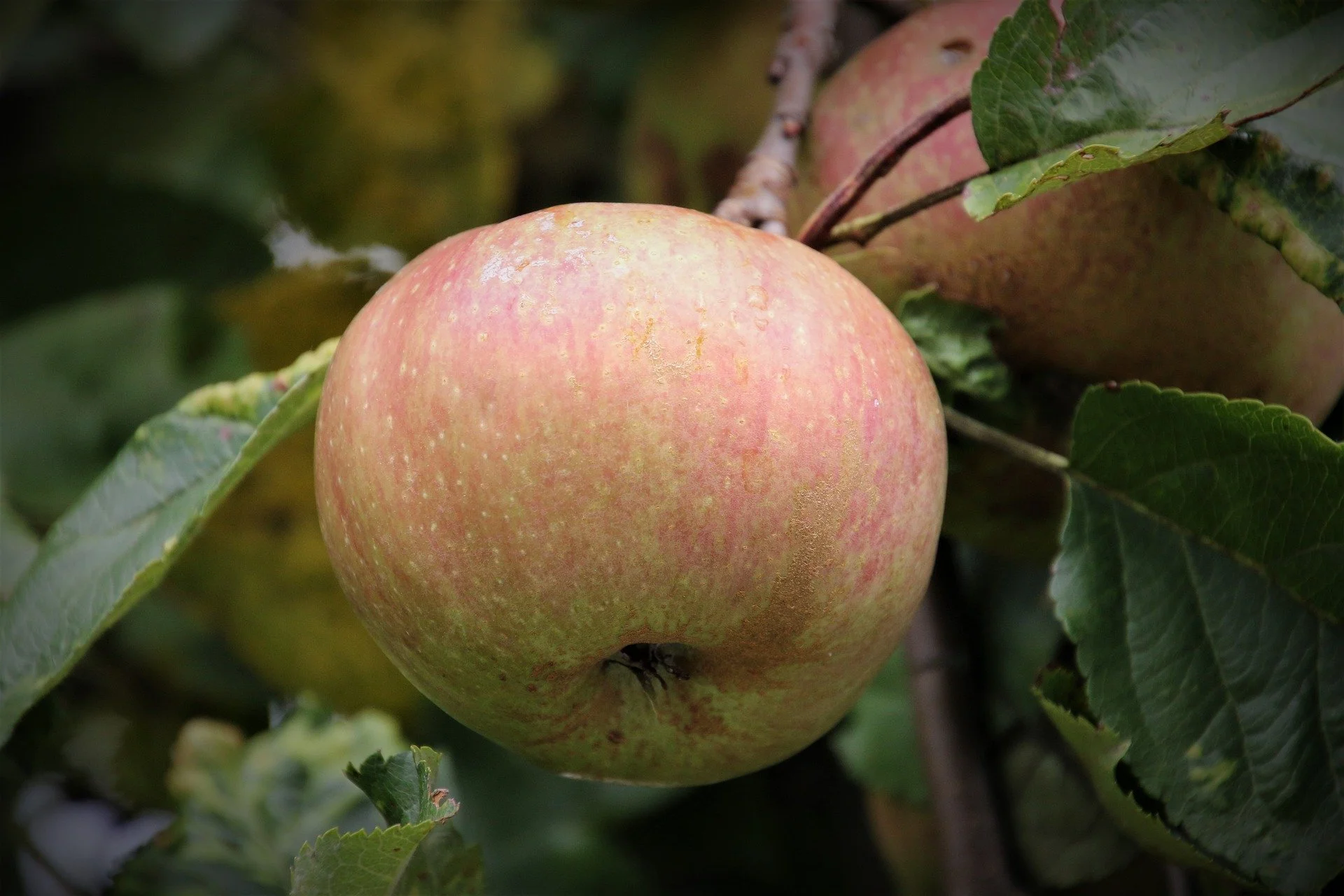
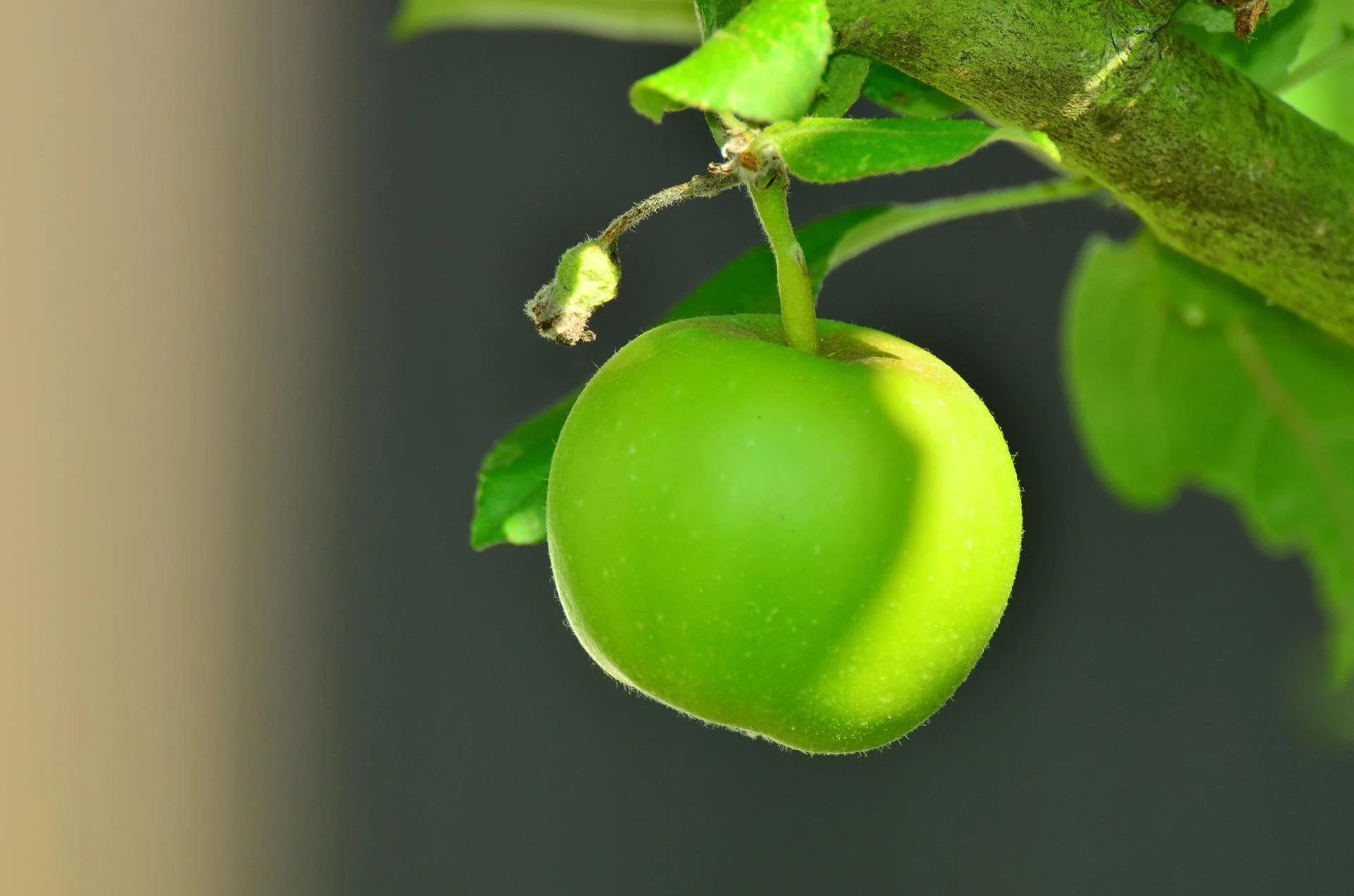

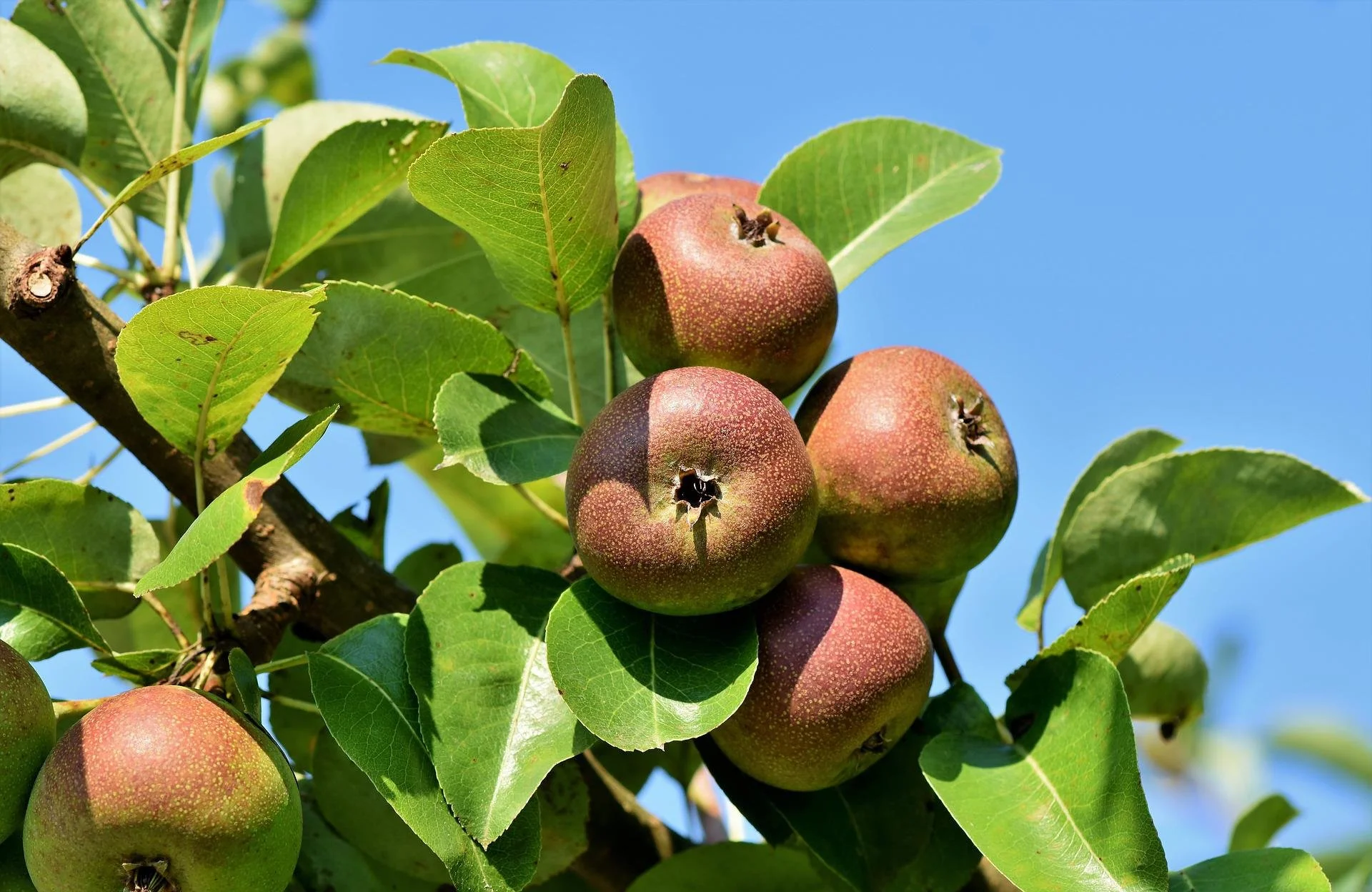



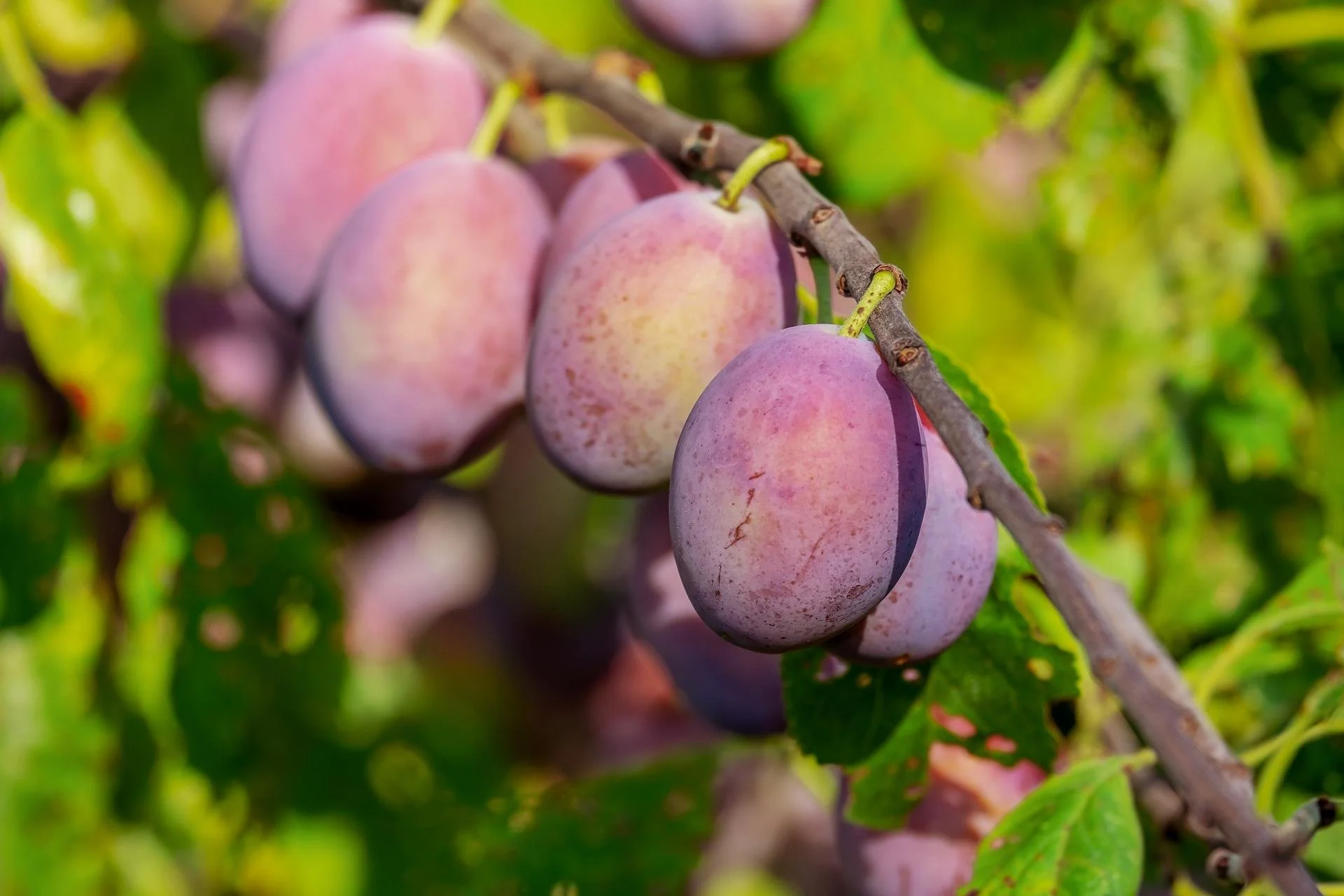





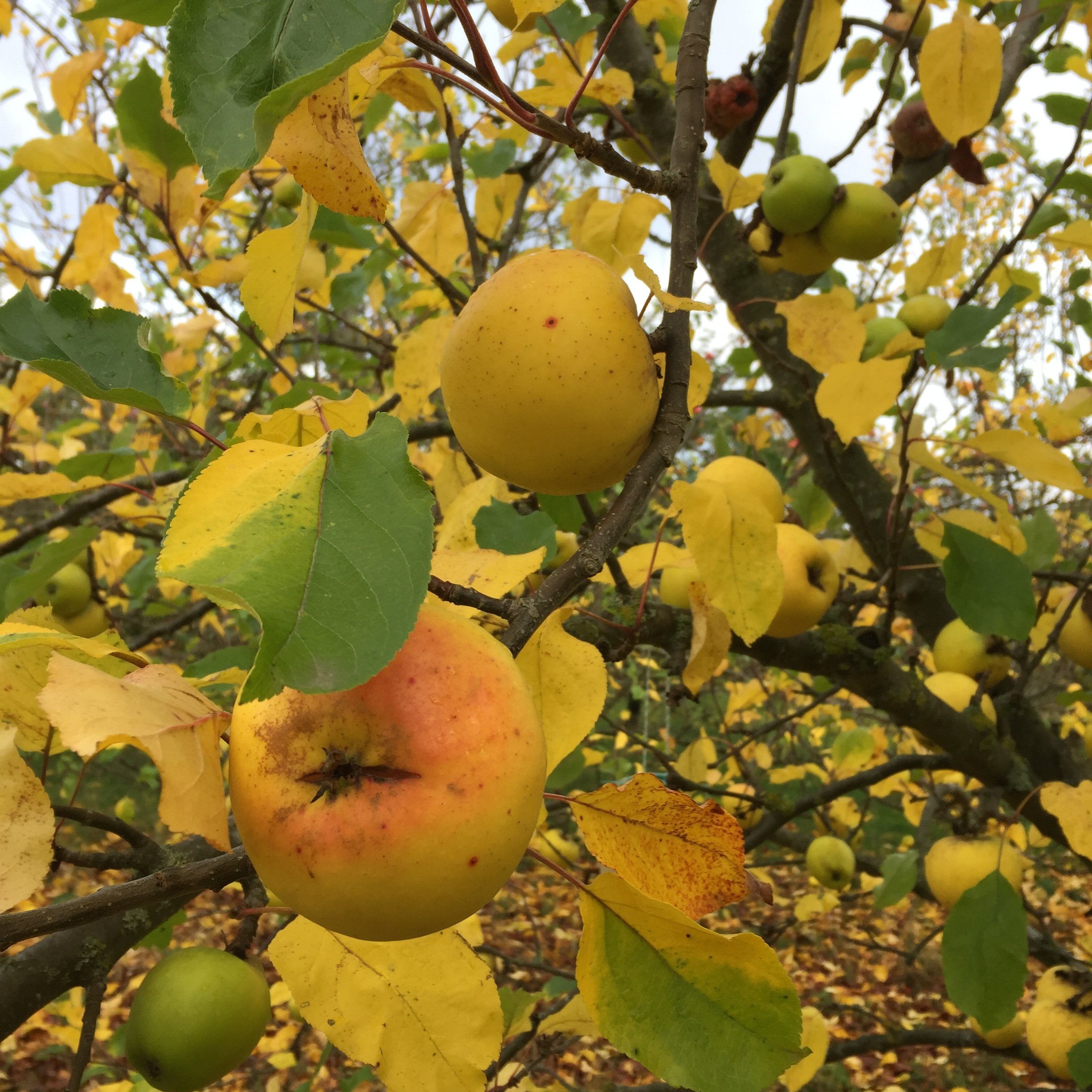
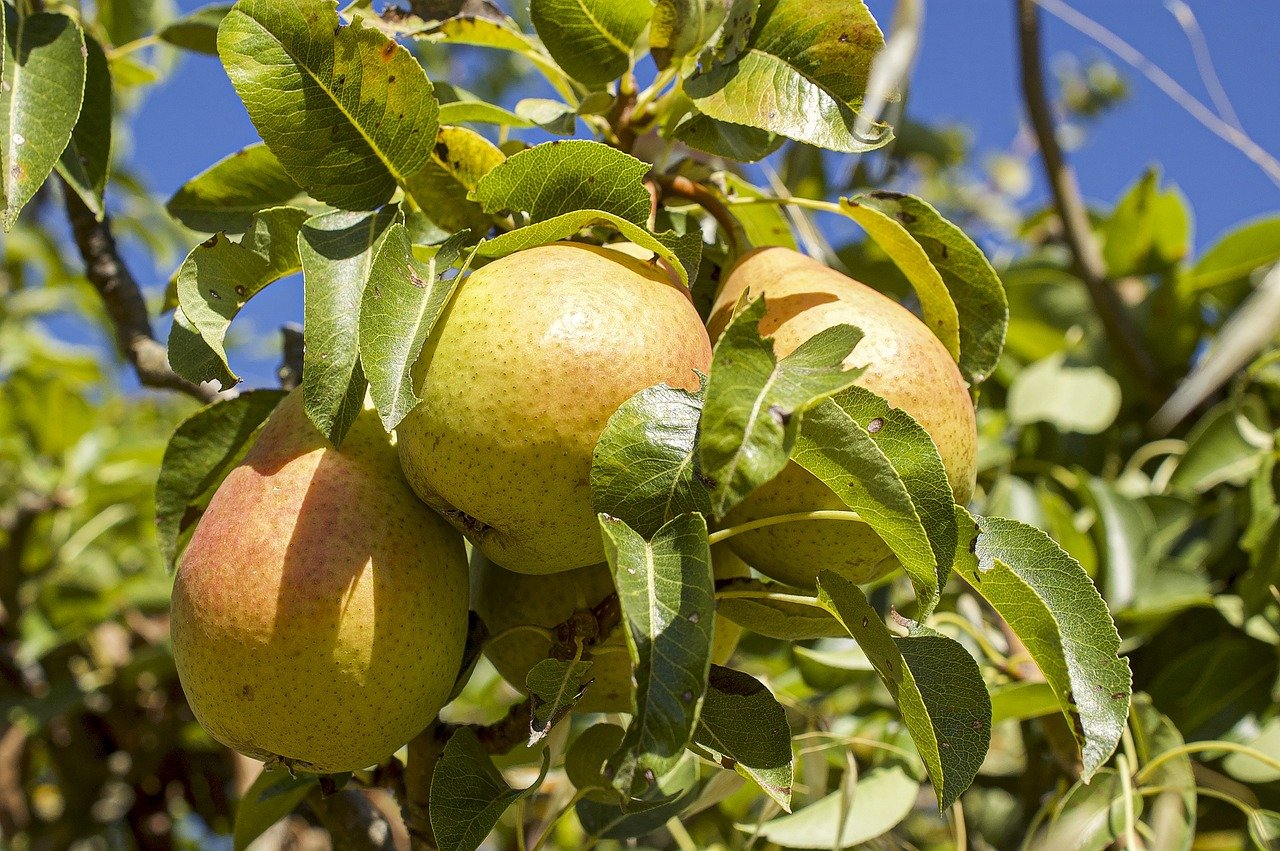





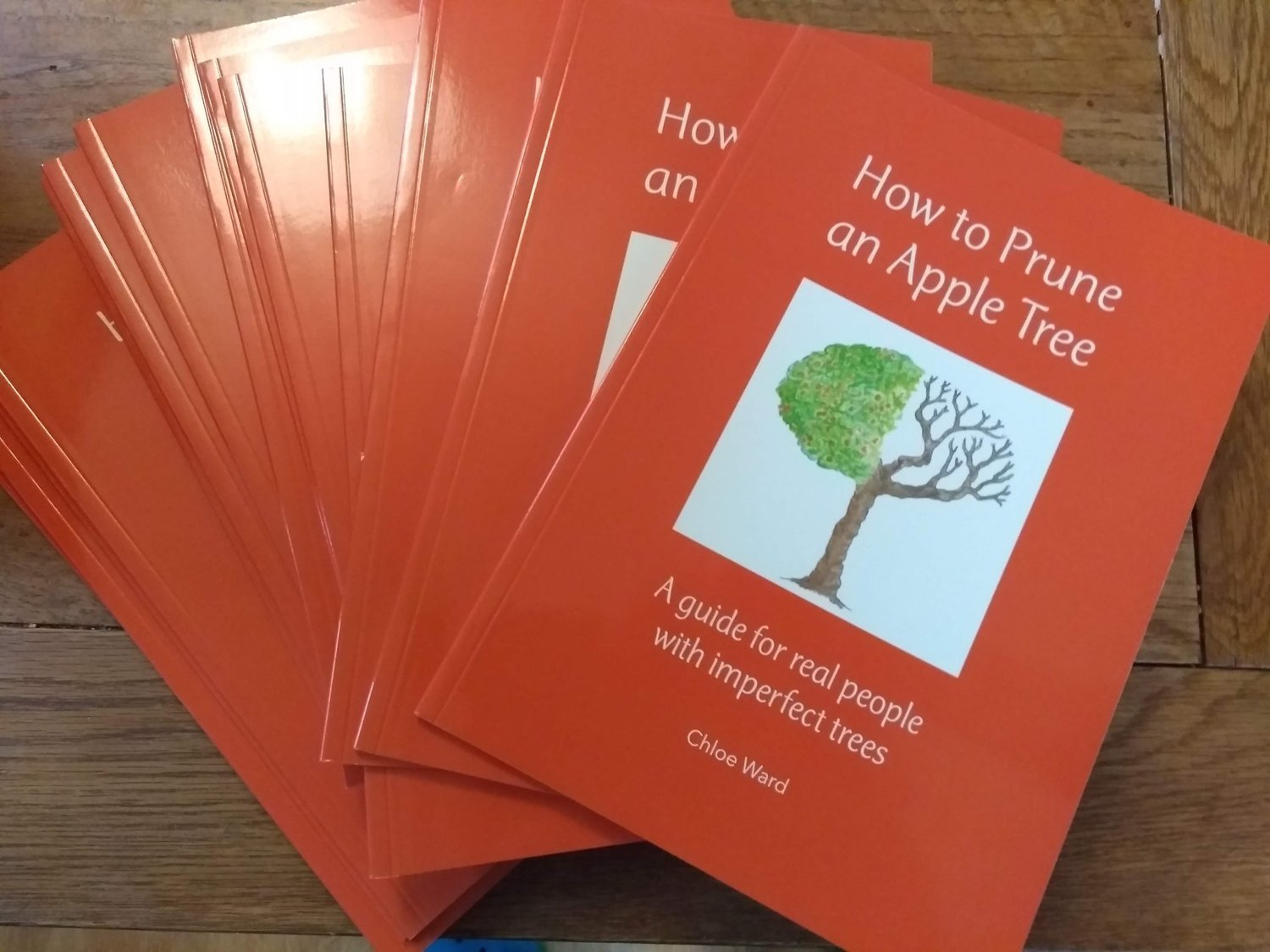
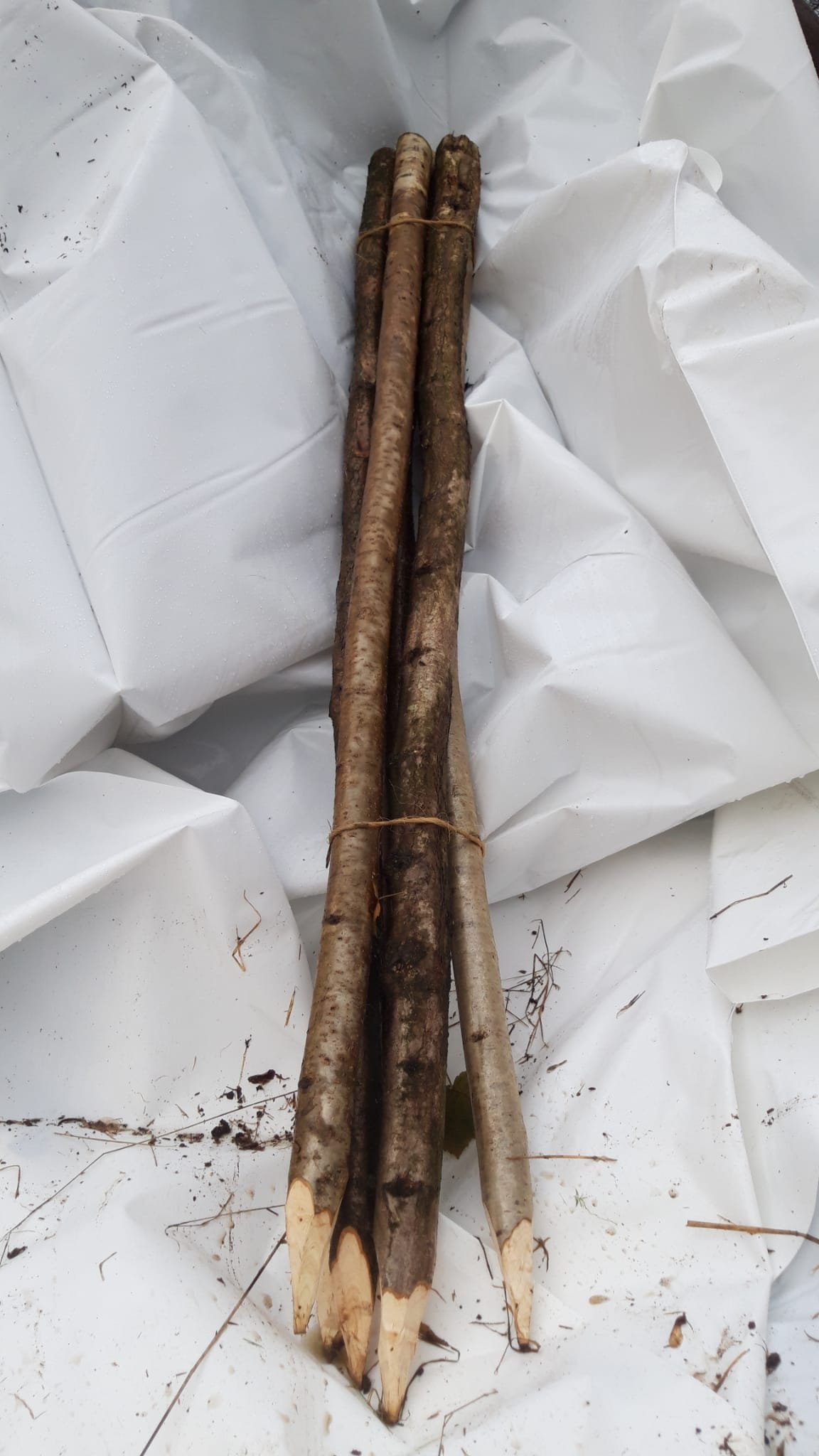
A small to medium dessert apple. Fruit is yellow, red skinned with slightly tart flavour.
Type: Dessert
Season: Sep-Oct
Pollination: Self-sterile. Pollination group D